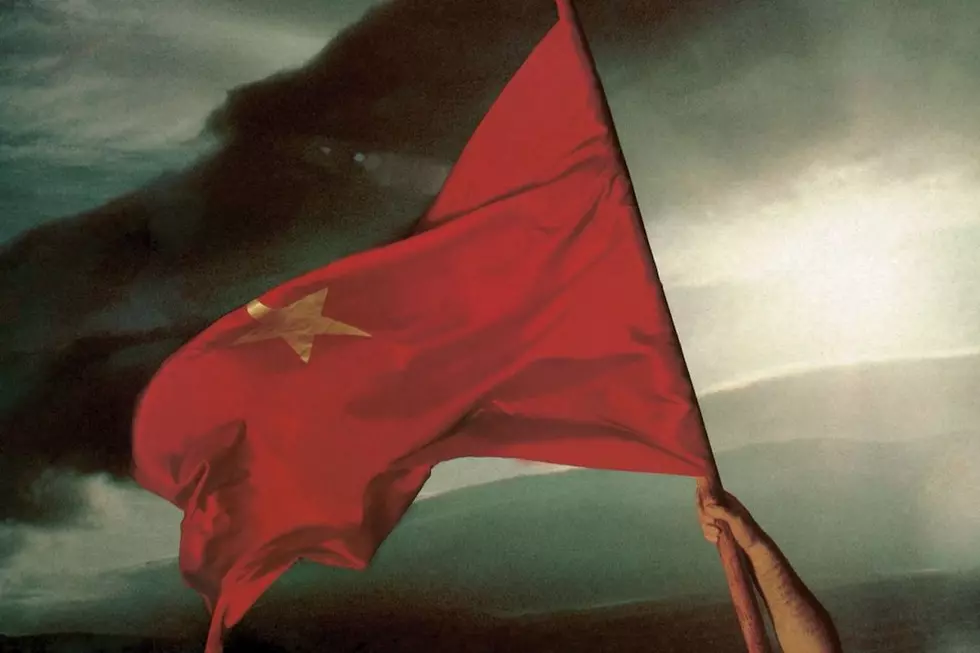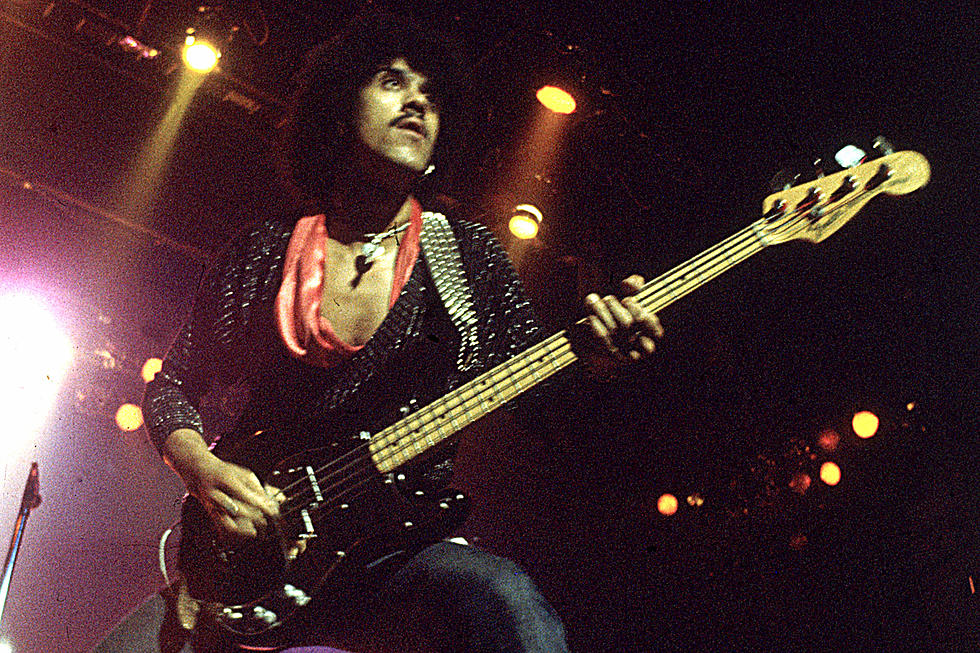
Why Thin Lizzy Struggled Through the Misunderstood ‘Renegade’
Thin Lizzy released perhaps their most underrated and misunderstood album on Nov. 15, 1981. Renegade arrived at a time of great uncertainty for Thin Lizzy, due in part to several issues – ranging from the continued pressures to stay relevant (and financially solvent) amid changing musical times to band leader Phil Lynott's recent distractions with his first solo album, to simply maintaining a stable lineup.
On Renegade, Lynott and longtime drummer Brian Downey and guitarist Scott Gorham were complemented by guitarist Snowy White (back for his second album after 1980's Chinatown) and a session keyboardist-turned-official group member (and occasional co-songwriter) in Darren Wharton, but this was a pretty fluid situation. And, musically speaking, it resulted in an album filled with some of Thin Lizzy's most eclectic but fan-dividing tracks.
There were more than a few harmony-laden hard rockers cut from the band's well-established template, including "The Pressure Will Blow," "Leave This Town," "No One Told Him," "It's Getting Dangerous" and the first single, "Hollywood (Down on Your Luck)," but also a dramatic and metallic opening number about Nostradamus called "Angel of Death" (prefaced by a very '80s synthesizer intro by Wharton), a comparatively restrained (until the power chords kicked in) and surprisingly vulnerable title track, a Latin-spiced border romance called "Mexican Girl" and a funk/jazz departure called "Fats."
This prompted recollections by Gorham when he spoke to author Mark Putterford for the Philip Lynott biography, The Rocker: "I remember 'Fats' going down on tape and thinking, 'Woah! What was that?' But then after 'Dancing in the Moonlight' became a hit, I was forced to admit that maybe I was thinking too one-dimensional, that maybe those pop songs had their place on Lizzy albums. ... Apart from anything else, trying out different styles on the records kept it interesting for us."
Wharton shared the guitarist's ambivalence. "Despite the fact that I got to do a piano solo, I thought that 'Fats' missed the mark," Wharton said. "But then, Phil refused to be restrained as a songwriter, and he was always keen to experiment. You have to admire that in a musician. Perhaps it worked; perhaps it didn't. At least he tried."
Much of Lynott's increasing songwriting wanderlust resulted directly from the anything-goes excitement of his 1980 stand-alone LP, Solo in Soho. (A second, called The Philip Lynott Album would arrive in 1982). In this regard, he had an ally in Thin Lizzy's other guitarist, White.
An odd fit into the band to begin with, White was a bluesman at heart who would spend most of his career playing live with Pink Floyd, but he counts Renegade's title cut (which he co-wrote with Lynott) among his favorite Lizzy moments, telling Putterford, "I am still very proud of my contribution to that piece. In fact, I think the whole album was better than Chinatown. I think it proved that Thin Lizzy were a lot more song-orientated than most heavy bands, who usually tend to be riff-orientated."
Listen to Thin Lizzy's 'Renegade'
Even the album's artwork broke from tradition, and longtime cover artist Jim Fitzpatrick. The unusually impressionistic picture was snapped by fashion photographer Graham Hughes, whose band portraits also graced the back sleeve. Maybe this change was a turn-off to fans, because Renegade failed to sell many copies and achieved the lowest chart position for Thin Lizzy since 1975's pre-fame Fighting, while single "Hollywood" never even reached the U.K. Top 50.
The new year nevertheless saw Thin Lizzy gamely setting out on tour across Europe and the U.K., but reviews of the shows were mixed, and those involved seem to have precious few good memories of the experience. Putterford's book quotes band associate Peter Eustace as saying "things were rapidly spinning out of control" and guitarist White claiming that "the memories are so painful he's managed to blot them out of his mind altogether."
Tour bus driver John Burnham noted that "there was a lot of pressure on Philip on that tour. When Robbo [former guitarist Brian Robertson] was in the band, or Gary Moore, the audience had someone else to watch. But with Renegade, who was there? Darren Wharton was pretty faceless, and Snowy White was so quiet it was unbelievable. Philip didn't have anyone to help him share the burden of the spotlight."
Even more worrisome, Lynott's increasing dependence on drugs had him running "hot and cold" according to promoter Adrian Hopkins (again speaking in Putterford's book). "I saw both sides of [Phil] on that tour," he said. "I'd see him stripped naked in the dressing room looking terrible -- no weight on him, covered in sores and very fragile-looking. Then half an hour later I'd see him up there onstage looking like a king."
By the time the band made it off the road and regrouped in Ireland to start talking about their next LP, White had had enough. His exit only softened by the promising recruitment of erstwhile Tygers of Pan Tang guitarist John Sykes (who would join Whitesnake and Blue Murder later).
Sykes brought in some much needed young blood, and Thin Lizzy pulled themselves together to record one final studio album in 1983's much heavier Thunder and Lightning, then embarked on a farewell tour that apparently broke Lynott's heart. By January 1986, he'd be dead, ensnared at last by his chemical demons, and his sad obituary cast even darker shadows over Renegade's polarizing legacy.
For die-hard Thin Lizzy fans, however, the album remains an underrated gem that continues to reveal so many dimensions to Lynott's complex personality and incomparable talents.
Thin Lizzy Albums Ranked
More From Classic Rock Q107










